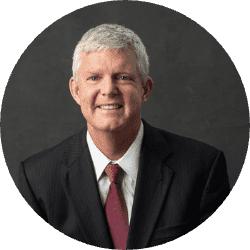Over the past several years – as a pandemic swept across the world and America faced a reckoning on long-deferred issues of social justice – people had a chance to step back and rethink a lot about life, and the best ways to balance life with work. Not just how and where they wanted to invest their time and passion, but also how they should expect to be valued for those contributions. And hiring organizations, faced with unprecedented disruptions to the workplace, had a chance to rethink both what they value and how they, in a comprehensive way, recognize Value.
Today, it’s no secret that salaries are on the rise. Non-profits, like all organizations, are having to pay more to attract and retain talent. But employers in the non-profit sector have many tools at their disposal – both financial and non-financial – to help navigate the talent market’s new norms regarding Value. While conventional notions like return on investment have not been forsaken, other value propositions are coming into their own.
So, here we offer some practical insights from our work, to help hiring organizations manage both the hard and soft sides of the evolving Value equation:
Start with a conversation: As one of the first steps in the recruitment process, hiring organizations need to look at the roles they’re hiring for, and ask, “For this role, what can we offer a candidate? What value-add do we need from a candidate? What are we doing to attract new hires and make this a rewarding place to work?” Creative, bespoke answers to these questions will prepare the organization for frank, transparent conversations as you go out to the market in search of the right talent.
Salaries need to be equitable: One has to recognize that money is still the most important element of, and tool for, recognizing Value. While softer elements of Value can be attractive (e.g., mission, culture) they very rarely make up for a salary that is inequitable to start with. Also, understand that candidates are watching the market closely – particularly for senior roles – and they will most likely know what the market rate is for any role for which they’re applying.
The most qualified candidates for any given role may also push for the highest salary in the available range, for a number of reasons. They are not afraid to state their worth and ask for commensurate financial compensation. And they may want to build in some protection against inflationary pressure, given that non-profits generally offer extremely small annual salary adjustments once you join.
In short, there is no way to avoid upward pressure on salary – but there are ways to potentially blunt the force of it, particularly for smaller organizations that may not have the same resources and ability to compete at the top of the financial ranges, compared to larger organizations.
“…if you’re not speaking about how you’re going to support employees’ career growth, then in a sense, you’re not in the game. In a profession with such high demand and a tight supply of talent, mentorship and career growth can have tremendous…Value.”
Don’t be afraid to get creative: Non-profits have yet to fully embrace many of the financial tools used by for-profit companies. For example, candidates pushing the upward limit on salary may be open to a signing bonus to fill any gap between the offered salary and their ideal. Relocation expenses can be a useful tool to smooth the way for a life transition. Performance bonus pools are a common feature of corporate compensation packages and are becoming more common at large non-profits. And a practice of “spot bonuses,” to recognize achievement, can be an attractive addition to compensation, in addition to making staff feel valued and recognized for their day-to-day work.
Flexible work environments also count for a lot in today’s market, as reprioritizing work-life balance has changed the career calculus for many candidates. Offering the possibility of remote and hybrid work may help offset some salary differences. So if you want to build a larger, more diversified talent pool, creating as much flexibility as possible can help get you there.
With these kinds of financial tools, the institution isn’t putting out an extravagant amount of money, they don’t add to fixed staff cost, and they can help bridge any gap between candidates’ expectations and the organization’s financial resources.
Lean on the mission and make it tangible: Perhaps the biggest piece of “soft” Value, which is becoming ever-more prominent in recruiting conversations, is the topic of the mission. Employers are putting mission more front-and-center, a strong positive because it makes candidates think a little bit harder about mission fit. And once candidates are placed, a strong sense of mission fit can create a great deal of soft Value, especially for smaller organizations where staff are closer to the institution’s day-to-day operations.
For example, at a zoo, every day you see the animals; you may be able to help the handlers, take nature courses, or participate in interactive demonstrations; that sense of connection is a concrete experience of mission. If you’re serving youth at a Boys & Girls Club, there may be multiple ways you can connect with the community you serve. So, organizations need to leverage their unique strengths, which can serve as key differentiators, bringing the mission to life so that candidates understand how the advancement team can experience the mission directly and personally.

Support career development: As more people retire from the advancement field, we are not replacing talent fast enough. That is another cause of upward pressure on salaries – fewer talented people, for more open positions, means greater competition – and this market pressure is only going to get more intense for the foreseeable future. Thus, hiring organizations’ statements and practices need to be very supportive of the career aspirations of new and existing staff. As part of the recruitment process, if you’re not speaking about how you’re going to support employees’ career growth, then in a sense, you’re not in the game. In a profession with such high demand and a tight supply of talent, mentorship and career growth can have tremendous soft Value for candidates.
Think hard about what you’re valuing: As non-profits have continued to rethink many aspects of Value, and the workplace becomes more remote and hybrid, culture has been rising in importance – e.g., high collaboration, strong team dynamics and cohesion, supportiveness, and inclusiveness. Those are generally referred to as “soft skills,” but more and more non-profits are treating them as essential to the hiring decision. And if those “soft skills” are valuable to your organization, then they need to be recognized and compensated for in the Value equation.
In that vein, we recently had a client who, in hiring for a senior role, narrowed their choice to two top candidates and picked the candidate with less experience – for many of the reasons cited above, as well as her tremendous potential. And to help her fully realize that potential they’ll be hiring a fee-based executive coach to help her build out her skill set. Coaching is yet another way to be creative with non-salary incentives – rather than being deployed as last resort to rescue under-performers, coaching can be deployed proactively as a career development benefit that would be attractive to many fundraisers who have leadership potential but are early in their careers.
Ultimately, it’s up to the hiring organization to make their concept of Value concrete for potential candidates – not just what you’re paying, but also what your values are, and what you value in a candidate. Then make certain that you are recruiting in alignment with those values, placing them at a very high level in the recruiting process. Finally, make sure candidates understand how you intend to recognize their Value and what programs you have in place to reward and retain strong performers.
If you are clear about your approach to all the many elements of Value, then the better equipped you will be to find and attract the next generation of advancement leaders.
Curious to learn more? Read the next article in this series, here.
Contributing authors:

Tom Herbert, Senior Consultant

Marianna DiVietro, Search Consultant


